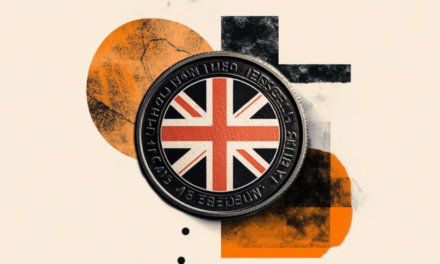The Pound Sterling (GBP) rises to near 1.3440 against the US Dollar (USD) after the release of the UK GDP data. The strength in the GBP/USD pair is contributed by the UK data release and weakness in the US Dollar.
At the time of writing, the US Dollar Index (DXY), which tracks the Greenback’s value against six major currencies, trades close to a fresh weekly low near 98.40 posted earlier in the day.
The Greenback faces selling pressure from a series of headwinds, especially firm Federal Reserve (Fed) dovish bets and ongoing trade frictions between the United States (US) and China.
Traders remain increasingly confident that the Fed will cut interest rates further this year as downside risks to the labor market have escalated. According to the CME FedWatch tool, traders see a 94.6% that the Fed will reduce interest rates by 50 basis points (bps) to 3.50%-3.75% in the remaining year.
Meanwhile, Fed Governor Michelle Bowman has also acknowledged labor market risks and has supported two more interest rate cuts this year. “I continue to see two more cuts before the end of this year,” Bowman said on Tuesday, Reuters reported.
On the global front, US President Donald Trump has signaled that he will persuade China to halt buying Oil from Russia. This week, trade tensions between the two nations escalated after Trump threatened to impose additional 100% tariffs on Beijing, which will come into effect in early November. However, market experts remain confident that Washington might roll back its tariff decision after a meeting between Trump and Chinese leader XI Jinping scheduled later this month in South Korea.
Pound Sterling outperforms its peers as UK economy returns back in black
- The Pound Sterling gains against its major peers on Thursday after the release of the United Kingdom (UK) monthly Gross Domestic Product (GDP) and factory data for August. The Office for National Statistics (ONS) reported that the economy grew by 0.1%, as expected, at the same pace as it contracted in July.
- The Industrial Production rose by 0.4% on a monthly basis, faster than estimates of 0.2%. In July, it declined by 0.4%. Year-on-year, the Industrial Production fell at a faster pace of 0.7%, compared to estimates of 0.6% and a 0.1% decline seen in July.
- Meanwhile, the Manufacturing Production grew at a faster pace of 0.7% in the same month against estimates of 0.4%. In July, output in the manufacturing sector declined by 1.1%.
- Signs of recovery in the manufacturing sector and a slight Gross Domestic Product (GDP) growth are expected to offer some relief to the UK government. However, the relief is expected to remain short-lived as the government prepares to unveil the Autumn Budget next month, in which it is expected to raise taxes to fund spending on day-to-day operations.
- On the monetary policy front, the speculation for more interest rate cuts by the Bank of England (BoE) in the remaining year has increased amid souring job market conditions and hopes that price pressures have peaked for now.
- This week, the ILO Unemployment Rate for the three-months ending August accelerated to 4.8% from 4.7%. On the inflation front, the BoE stated in its policy meeting last month that price pressures would peak around 4% in September.
Technical Analysis: Pound Sterling struggles to return above 20-day EMA
-1760597896977-1760597896987.png&w=1536&q=95)
The Pound Sterling trades calmly near 1.3420 against the US Dollar on Thursday. The GBP/USD pair struggles to extend its recovery above the 20-day Exponential Moving Average (EMA) around 1.3419.
The outlook for the Cable remains uncertain amid a Head and Shoulder chart pattern on a daily timeframe.
The 14-day Relative Strength Index (RSI) holds above 40.00. A fresh bearish momentum would emerge if the RSI falls below that level.
Looking down, the August 1 low of 1.3140 will act as a key support zone. On the upside, the psychological level of 1.3500 will act as a key barrier.
GDP FAQs
A country’s Gross Domestic Product (GDP) measures the rate of growth of its economy over a given period of time, usually a quarter. The most reliable figures are those that compare GDP to the previous quarter e.g Q2 of 2023 vs Q1 of 2023, or to the same period in the previous year, e.g Q2 of 2023 vs Q2 of 2022.
Annualized quarterly GDP figures extrapolate the growth rate of the quarter as if it were constant for the rest of the year. These can be misleading, however, if temporary shocks impact growth in one quarter but are unlikely to last all year – such as happened in the first quarter of 2020 at the outbreak of the covid pandemic, when growth plummeted.
A higher GDP result is generally positive for a nation’s currency as it reflects a growing economy, which is more likely to produce goods and services that can be exported, as well as attracting higher foreign investment. By the same token, when GDP falls it is usually negative for the currency.
When an economy grows people tend to spend more, which leads to inflation. The country’s central bank then has to put up interest rates to combat the inflation with the side effect of attracting more capital inflows from global investors, thus helping the local currency appreciate.
When an economy grows and GDP is rising, people tend to spend more which leads to inflation. The country’s central bank then has to put up interest rates to combat the inflation. Higher interest rates are negative for Gold because they increase the opportunity-cost of holding Gold versus placing the money in a cash deposit account. Therefore, a higher GDP growth rate is usually a bearish factor for Gold price.







